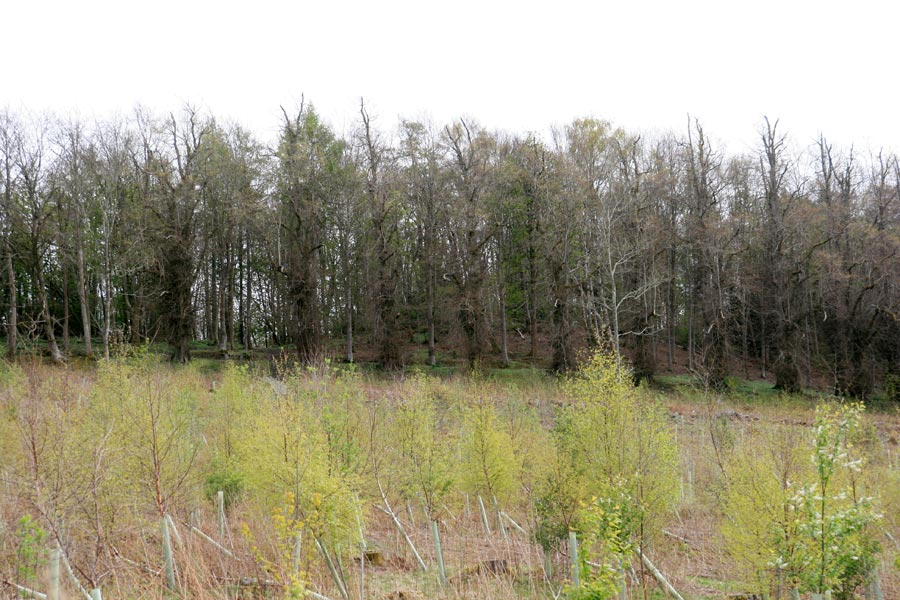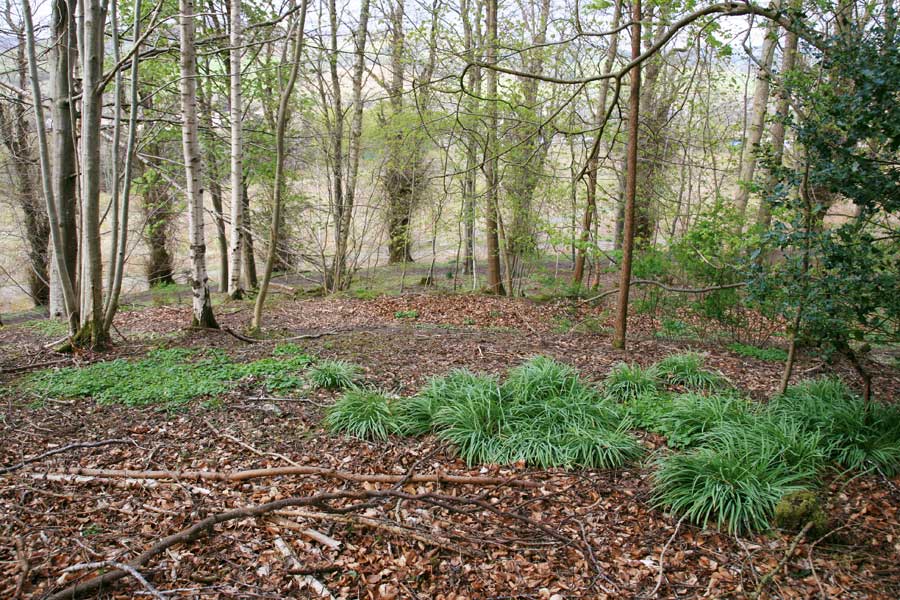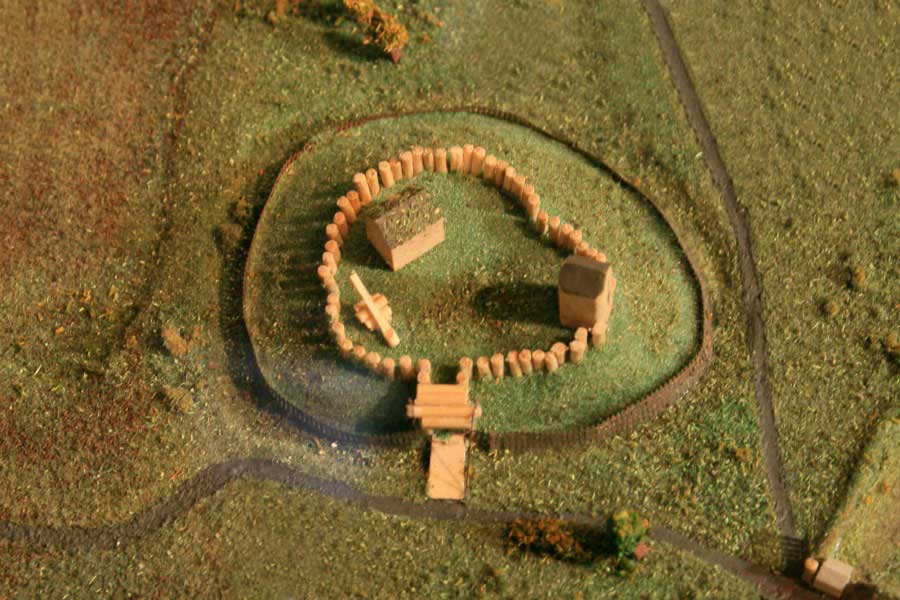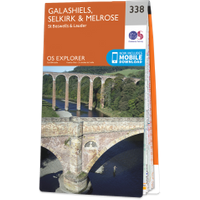

Selkirk Castle dates back to at least the 12th century, but now all that remains of it are the motte and bailey.
The first mention of Selkirk Castle is in the foundation charter document of Selkirk Abbey from 1119. Initially it would probably have been an earth and timber castle, built on a large mound that although partly natural would have been enhanced for defence.
The mound rises above the Haining Loch to its south, and measures around 73 metres north to south by around 56 metres east to west. It stands around 12 metres higher than the surrounding land, but at the north-east corner is a motte which rises higher still. It is now planted with trees

The motte’s summit has a diameter of around 12 metres, and rises around 5 metres in height. Upon this there would initially have been a wooden tower, later replaced by a stone tower. Around the base of the motte are a series of terraces.


Surrounding the mound is a ditch, which is still visible on the north and east sides, extending down to the loch to the south. It measures around 12 metres in width and around 1 metre in depth, although it has probably filled up with mud and organic material over the centuries.
The original layout to the west of the mound is less clear, as it has been changed significantly during landscaping in the 17th, 18th and 19th centuries. However there is a deep gully known as the Clockie Sorrow which may have been part of the original defences, although if it is connected to the castle it is probably an enhanced natural feature.
During the Wars of Independence it was occupied by the English and rebuilt by Edward I in 1301. Sir Alexander de Balliol of Cavers, the Warden of The Forest, and Sir Robert Hastings, the Sheriff of Roxburgh, were appointed as surveyors to oversee the rebuilding.
In 1302 however the castle was retaken by the Scots, only to fall into English hands again when Edward II invaded Scotland in 1311. The castle’s fate beyond this time is unclear, however by 1334 it seems to have fallen out of use.
When large parts of the Lowlands were yielded to Edward III in that year, the “town, castle and county” of Roxburgh, Edinburgh, Peebles and Dumfries were mentioned, whereas only the “town and county” of Selkirk was referred to, suggesting the castle had been destroyed.
Selkirk Castle was ultimately replaced by a new castle called The Haining.
A model of what Selkirk Castle may have looked like can be seen in Halliwell’s House Museum.

Alternative names for Selkirk Castle
Pele of Selkirk; Selkirk Motte; The Haining
Where is Selkirk Castle?
Selkirk Castle is in the parish of Selkirk and the county of Selkirkshire.
Grid reference: NT 47024 28136
Lat / long: 55.544045, -2.841103










